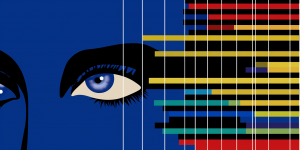|
|
| Line 10: |
Line 10: |
| This lesson offers solutions to potential pitfalls in scientific studies raised in [[10.1 Confirmation Bias]] and [[4.2 Finding Patterns in Random Noise]]. We use a stick measurement activity to illustrate the effects of confirmation bias and to motivate techniques to reduce its effect, especially blind analysis. These techniques are not universally employed in all fields of science today, and students pursuing a scientific career are encouraged to introduce these techniques in their own work. | | This lesson offers solutions to potential pitfalls in scientific studies raised in [[10.1 Confirmation Bias]] and [[4.2 Finding Patterns in Random Noise]]. We use a stick measurement activity to illustrate the effects of confirmation bias and to motivate techniques to reduce its effect, especially blind analysis. These techniques are not universally employed in all fields of science today, and students pursuing a scientific career are encouraged to introduce these techniques in their own work. |
|
| |
|
| <!-- Expandable section relating this lesson to earlier lessons. --> | | <!-- Expandable section relating this lesson to other lessons. --> |
| {{Expand|Relation to Earlier Lessons| | | {{Expand|Relation to Other Lessons| |
| | '''Earlier Lessons''' |
| {{ContextLesson|4.2 Finding Patterns in Random Noise}} | | {{ContextLesson|4.2 Finding Patterns in Random Noise}} |
| {{ContextRelation|Blind analysis is one way to prevent some forms of <math>p</math>-hacking. For example, choices to be made about a study, such as the exact statement of the hypothesis, definitions of terms, and statistical techniques, can be preregistered or made "blinded" to the data. The effects on the final result due to these choices may be hidden from the researcher during analysis. These techniques prevent motivated reasoning during analysis decisions.}} | | {{ContextRelation|Blind analysis is one way to prevent some forms of <math>p</math>-hacking. For example, choices to be made about a study, such as the exact statement of the hypothesis, definitions of terms, and statistical techniques, can be preregistered or made "blinded" to the data. The effects on the final result due to these choices may be hidden from the researcher during analysis. These techniques prevent motivated reasoning during analysis decisions.}} |
| {{ContextLesson|10.1 Confirmation Bias}} | | {{ContextLesson|10.1 Confirmation Bias}} |
| {{ContextRelation|Blind analysis helps prevent scientists from the temptation to make choices that make the result more likely to confirm the researcher's own prediction or to match currently accepted knowledge. Otherwise, non-confirming, surprising results may be incorrectly missed.}} | | {{ContextRelation|Blind analysis helps prevent scientists from the temptation to make choices that make the result more likely to confirm the researcher's own prediction or to match currently accepted knowledge. Otherwise, non-confirming, surprising results may be incorrectly missed.}} |
| }} | | {{Line} |
| <!-- Expandable section relating this lesson to later lessons. -->
| | '''Later Lessons''' |
| {{Expand|Relation to Later Lessons|
| |
| {{ContextLesson|13.1 Denver Bullet Study}} | | {{ContextLesson|13.1 Denver Bullet Study}} |
| {{ContextRelation|In group decision making, when factual evaluation and values evaluation are made by two different groups of people without knowledge of the other, it prevents evaluation motivated by the need to confirm a personal belief.}} | | {{ContextRelation|In group decision making, when factual evaluation and values evaluation are made by two different groups of people without knowledge of the other, it prevents evaluation motivated by the need to confirm a personal belief.}} |
